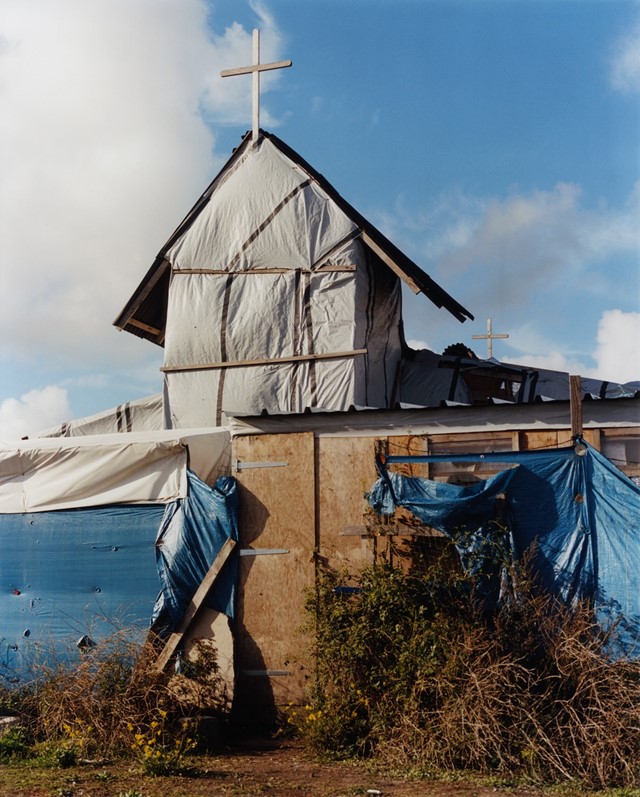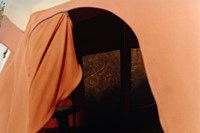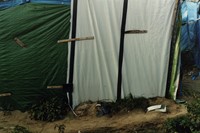As Brighton Photo Biennial begins, Harley Weir presents Homes – a series of images that draw attention back to what's happening on the other side of the water
As part of this year’s Brighton Photo Biennial, curated by Photoworks director Shoair Mavlian and themed around the title A New Europe, Harley Weir presents an exhibition of images taken immediately before and during the destruction of the refugee camp in Calais in 2016. In this series, originally published in her first book Homes, Weir illuminates shared humanity through intimate imagery shot against a backdrop of political displacement and uncertainty. At Fabrica, an exhibition space located in the nave of a church, Weir presents 16 images printed onto scaffolding fabric, a material choice that at once references the makeshift domiciles of her subjects and serves to hauntingly reaffirm their impermanence. Weir tells curator Antonia Marsh about her interest in borders, her motivation behind this project and how the exhibition in Brighton has taken shape.
On how her interest in borders began…
“The whole project started in 2012 when I went to Israel for work. I’d heard about the wall that divides the country but I’d never understood it so I walked along it for hours. I saw the world in a different way, for how it really was. Living in England we don’t have a border as such so we look at place differently, our island is like a fortress. That’s when I started thinking about borders. The following year I went back to walk along the wall that divides Palestine and the rest of the country and I took some pictures on either side. Then someone discouraged me from taking political pictures, insisting that it’s not my place and that I should just do what I know. I do understand that point of view so I left the project and felt self-conscious and fell back into fashion. But here and there I went back to it. I went to Georgia, to another conflict zone, to walk along its border. Another time I tried to get to the border of North Korea from Russia but of course I couldn’t get anywhere near. So I had this continuous border project that I kept returning to, and then finally what was going on in Calais felt really relevant, and I thought, ‘People cant tell me that this is nothing to do with me. There’s people here building a refugee camp on the other side of the border from this country, desperate to come to the UK.’”
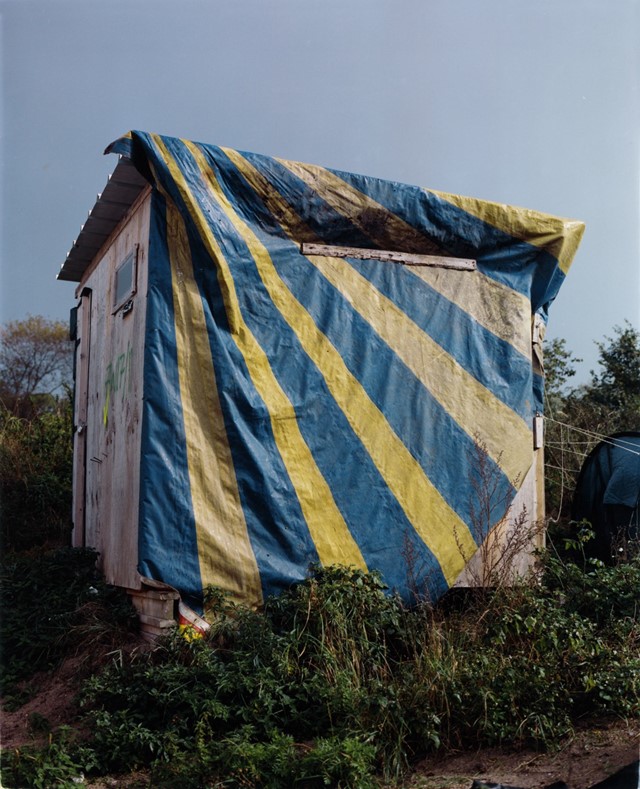
On her time in Calais…
“The first time I visited the camp there was a huge riot going on, tear gas everywhere. It really hit me. The word ‘jungle’ that people have used to describe it was very understandable in that situation because it’s so green, and there were people running everywhere – in the grass, everywhere, just desperately trying to get on top of lorries. When I heard that the camp was going to be taken down, I really felt like I needed to visit it again. I went back for a few days and met some really amazing people and then after they had demolished the camp I went back again and photographed what was left.”

On the second edition of Homes…
“It’s the same book but it has a few extra images which we added. There’s one image of the beach, because a lot of people forget that the refugee camp is actually on a beautiful beach that was once a holiday destination. So we added a picture of the sea looking out to England at the end, because a lot of the men who lived in the camp would walk along the shore and stand and look. I think that’s a very powerful image of hope that these people had at that refugee camp: looking out across the water to a better life.”
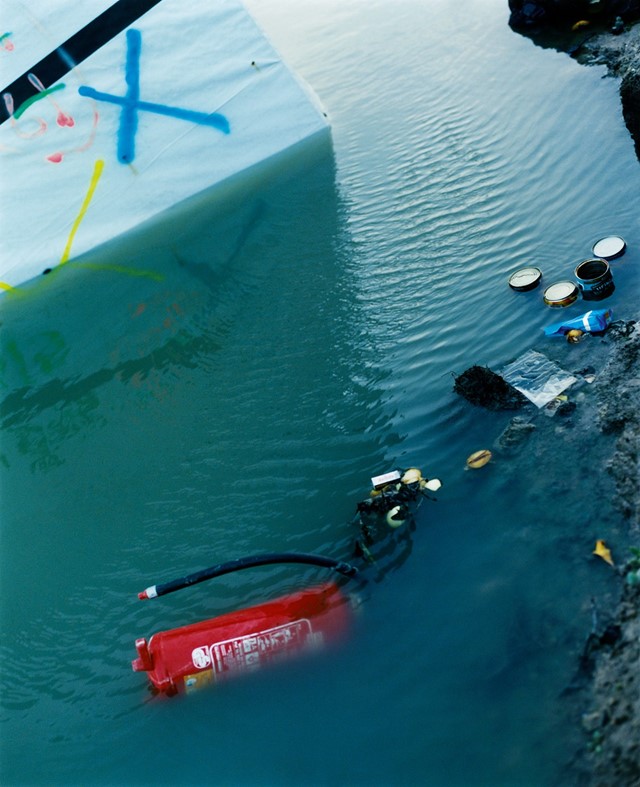
On the Photo Biennial’s theme and the exhibition at Fabrica…
“It’s interesting showing this work in Brighton which is of course across the water from where the photographs were taken. I think A New Europe is a really interesting theme for the Biennial because as a nation we are entering a scary time when we’re going through Brexit, we don’t know what’s going to happen, we aren’t sure how Europe is going to change, and a lot of issues surrounding migration remain. The refugee and migrant crisis is not, by any means, over: the camp in Calais is back up and running, so I think it’s a really good topic to put the limelight on again. The show is in a church, and it’s nice to work with a space that’s so irregular in shape that you actually have to do something unusual with your images. Exhibiting in a space like Fabrica forces you to look at your work differently. I wanted to build a tent-like habitat so you could walk into these personal spaces much like at the camp, but the space is really big so I’m not sure it feels so intimate. Even so, the light coming through the clerestory windows shines through the material that I’ve printed on, so the show is much more spatial than anything I’ve ever done before.”
Brighton Photo Biennial runs from September 28 until October 28, 2018 in Brighton. Homes by Harley Weir is available to buy now, published by Loose Joints.
